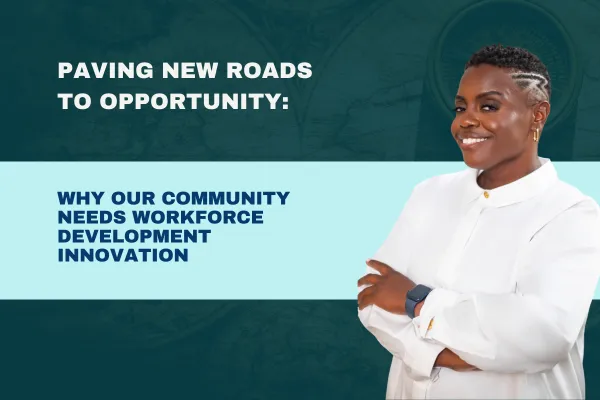
Paving New Roads to Opportunity: Why Our Community Needs Workforce Development Innovation

Why Our Community Needs Workforce Development Innovation
Some people are told to dream.
Others are told to be realistic.
But what if our systems made room for both?
For too long, the road to economic stability has looked like a single, narrow path: four-year degrees, student loans, and institutions not built with every community in mind. And while that path works for some, too many are pushed to the margins when they can’t follow it—or choose not to.
The truth?
There are multiple ways to build a stable, dignified life.
And it’s time our workforce systems caught up.
The Problem Isn’t Potential—It’s Access
Our communities are full of potential.
Barbers who understand small business management better than an MBA.
Mothers with the multitasking skills of a project manager.
High school graduates who can take apart and rebuild a computer faster than most college tech departments.
But potential without access?
That’s wasted opportunity.
Here’s what’s missing:
Affordable training that doesn’t require four years or $40,000
Job pathways that match today’s industries and tomorrow’s economy
Support systems that meet people where they are, not where institutions think they should be
Why Workforce Innovation Is a Community Issue
Workforce innovation isn’t about replacing college. It’s about making sure college isn’t the only ticket to a better life.
In fact, expanding workforce programs:
Helps people gain real-world, in-demand skills—quickly
Connects job seekers to high-wage careers in tech, healthcare, skilled trades, and more
Keeps talent in communities instead of forcing people to leave in search of opportunity
Reduces cycles of poverty and dependence by creating sustainable pathways to employment
This isn’t charity.
This is strategy.
And it’s long overdue.
Community Colleges: The Bridge We’ve Been Underutilizing
Community colleges are often the first door people walk through when life calls for change—job loss, career pivot, or a second shot at education.
They offer:
Credentialed training aligned with local jobs
Credit-for-prior-learning programs that honor what people already know
Flexible schedules for parents, caregivers, and full-time workers
Career coaches, mentors, and wraparound support that doesn’t end in the classroom
When we invest in these institutions—not as an alternative to university, but as a bridge to both work and continued learning—we lose fewer people to the margins.
We expand the number who finish their journey, in whatever form that takes.

The Real Stakes: Who Gets to Thrive—and Who Gets Left Behind
Let’s be clear:
This conversation isn’t just about economics. It’s about dignity.
When workforce systems work:
Families don’t have to choose between tuition and groceries
Workers can upskill without uprooting their lives
Communities retain their talent and reinvest it locally
And maybe most importantly—
Young people grow up knowing that success isn’t one-size-fits-all.
That their path matters, even if it doesn’t start in a dorm room.
How We Move Forward
Workforce development is not a trend. It’s not a talking point.
It’s a public infrastructure issue—like clean water, public safety, or housing.
If we want communities to thrive, we must:
Fund and elevate non-degree job training programs
Normalize career paths that don’t require college
Treat workforce innovation as a community-wide commitment
Because people don’t need permission to dream.
They need systems that stop getting in their way.
📥 Download Our Policy Brief Summary

Want talking points you can share with local leaders or partners?
Download our easy-to-share summary to use in:
Workforce board meetings
Grant proposals
Advocacy campaigns
Campus strategy sessions
👉🏿 Download the Policy Brief Here
Final Word
Every community deserves more than a path forward.
It deserves a bridge strong enough to carry everyone who dares to cross.
Let’s build it—with jobs that matter, pathways that last, and training that meets people where they are.
